Editor’s Note: ‘The Silk Road: Past, Present, Future’ travels east to west along this ancient trade route, exploring how traditional culture, arts, and trade have developed in the 21st century.
Story highlights
'Untouchable' artist cycled from India to Sweden to marry the woman he loved
Epic journey across eight countries took four months to complete, couple still married
Charlotte Von Schedvin was a blonde, blue-eyed young woman who hailed from Swedish nobility.
PK Mahanandia was a poor art student from eastern India, seen as an “untouchable” in his country’s caste system.
Yet their chance meeting in Delhi, late 1975, when Von Schedvin asked him to paint her portrait, led to him cycling from India to Sweden to be with her – a mammoth 3,600km journey spanning eight countries and taking over four months to complete.
The man who cycled from India to Sweden ... for love
Despite their different backgrounds and as if masterminded by fate, the young couple’s love was instant and overwhelming.
They would spend one glorious month together before Von Schedvin returned to her home in Boras, Sweden.
Mahanandia vowed to marry the woman he loved, at any cost. The talented painter sold everything he owned to buy a pushbike, and with just $80 in his pocket set off on his epic journey.
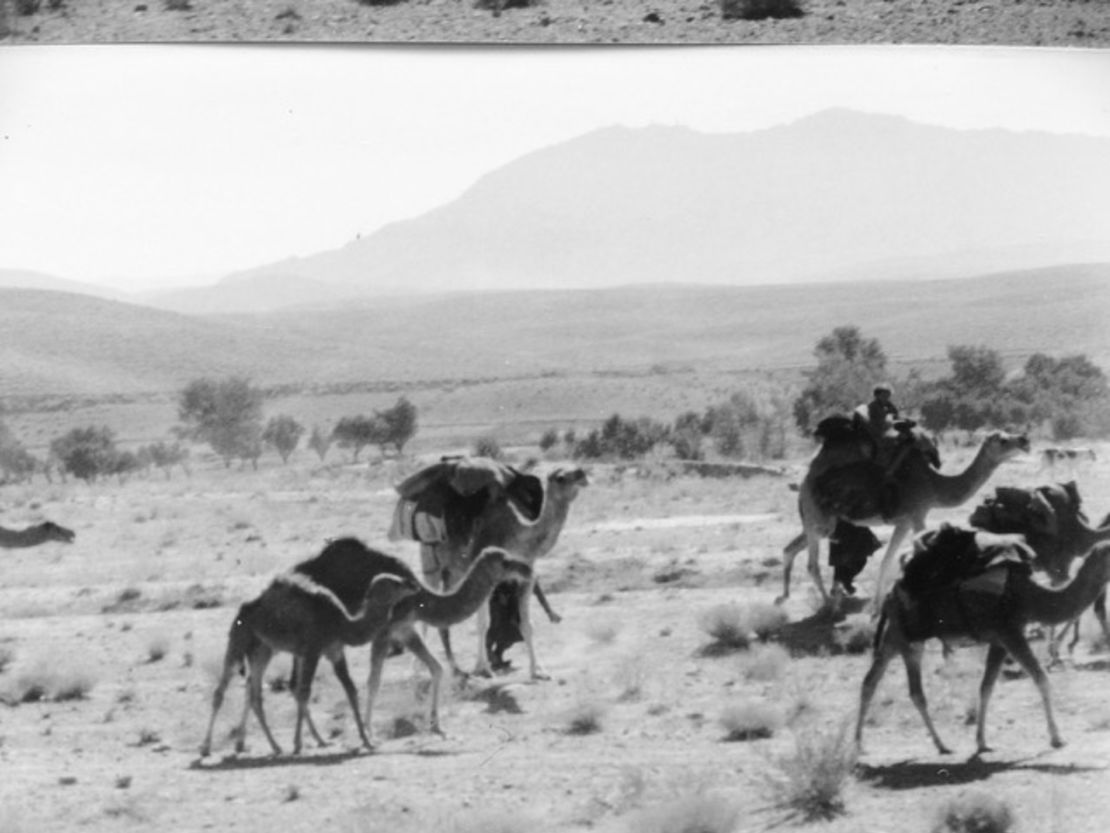
In those days “only a Maharaja could afford a flight to Sweden,” explained Mahanandia.
Along the way he slept in Bedouin tents, youth hostels or under the stars by the Caspian Sea. The young couple kept their romance burning through letters.
When their remarkable tale was recently shared on Facebook it was quickly shared tens of thousands of times.
Now, after almost four decades of marriage and two children later, the couple’s story has also reportedly sparked the interest of film makers around the world.
Written in the stars?
Mahanandia was just nine years old when an emotional encounter sowed the seeds for match he’d make 17 years later.
Born into the Dalit caste, the young boy was shunned by his fellow villagers – even forced to sit outside the schoolroom.
“I was below the dogs and cows,” he told CNN.
“The moment I went near the temple, [people] started throwing stones. Those things, I never forget.” He wells up recalling those long painful years.
One day he was allowed to sit at the back of the classroom – but not to touch anyone, as they’d be “polluted.” A British school inspector and his wife were coming to visit.
After a royal welcome, the inspector gave his garland of flowers to a girl at the front. His wife walked all the way to the back and gave hers to Mahanandia.
“She could see I was an outcast,” he remembers. “She touched my head and said: ‘Your lovely curly hair!’”
“I was happy, but at the same time I was crying. It was like a little light for me in the dark cave.”
Mahanandia took the garland proudly home to his mother and said: “Mum, I’m in love with the school inspector’s wife.”
Her response would impact the rest of his life.
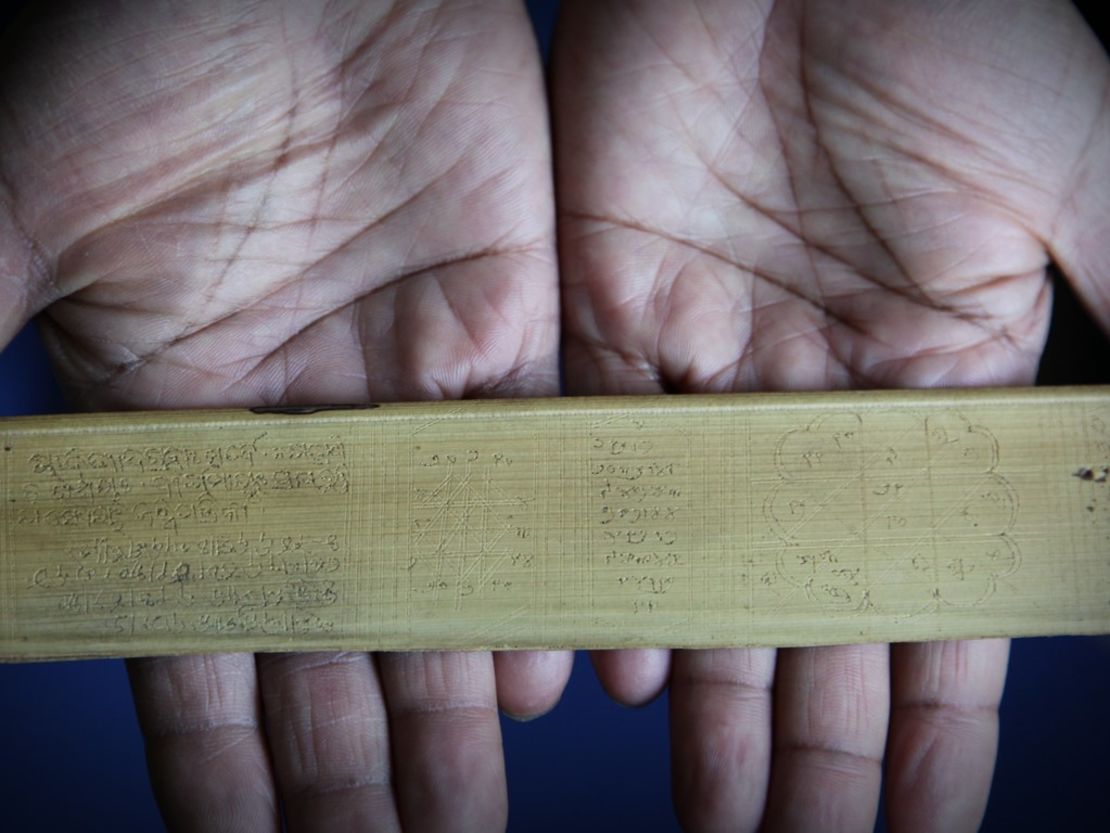
Presenting her son with a palm leaf horoscope, she told him he’d marry “a white woman, from a faraway land”.
She would also be a Taurus, involved in music and own a jungle, according to the prophecy.
“We’re not going to arrange any marriage for you,” Mahanandia recalls his mother saying – an unusual decision at the time, in a country where many unions were pre-arranged by parents.
A chance encounter
Fast-forward to 1975 and Mahanandia was 26, a broke art student in Delhi, often forced to sleep in bus stations or telephone booths.
Yet his talent furnished opportunities and Mahanandia gradually made a name for himself painting the portraits of politicians and celebrities – including Valentina Tereshkova, the first woman in space.
He was even granted permission to paint portraits in Delhi’s central square, Connaught Place.
It was there that he met Von Schedvin, a 20-year-old traveler with “a longing for India.” She had driven with friends from Sweden to India; 22 days in a minibus along the famous “Hippie Trail,” a cultural highway that followed much of the Silk Road.
As fate had turned Mahanandia to look West for his future, it had also pushed Von Schedvin to look East.
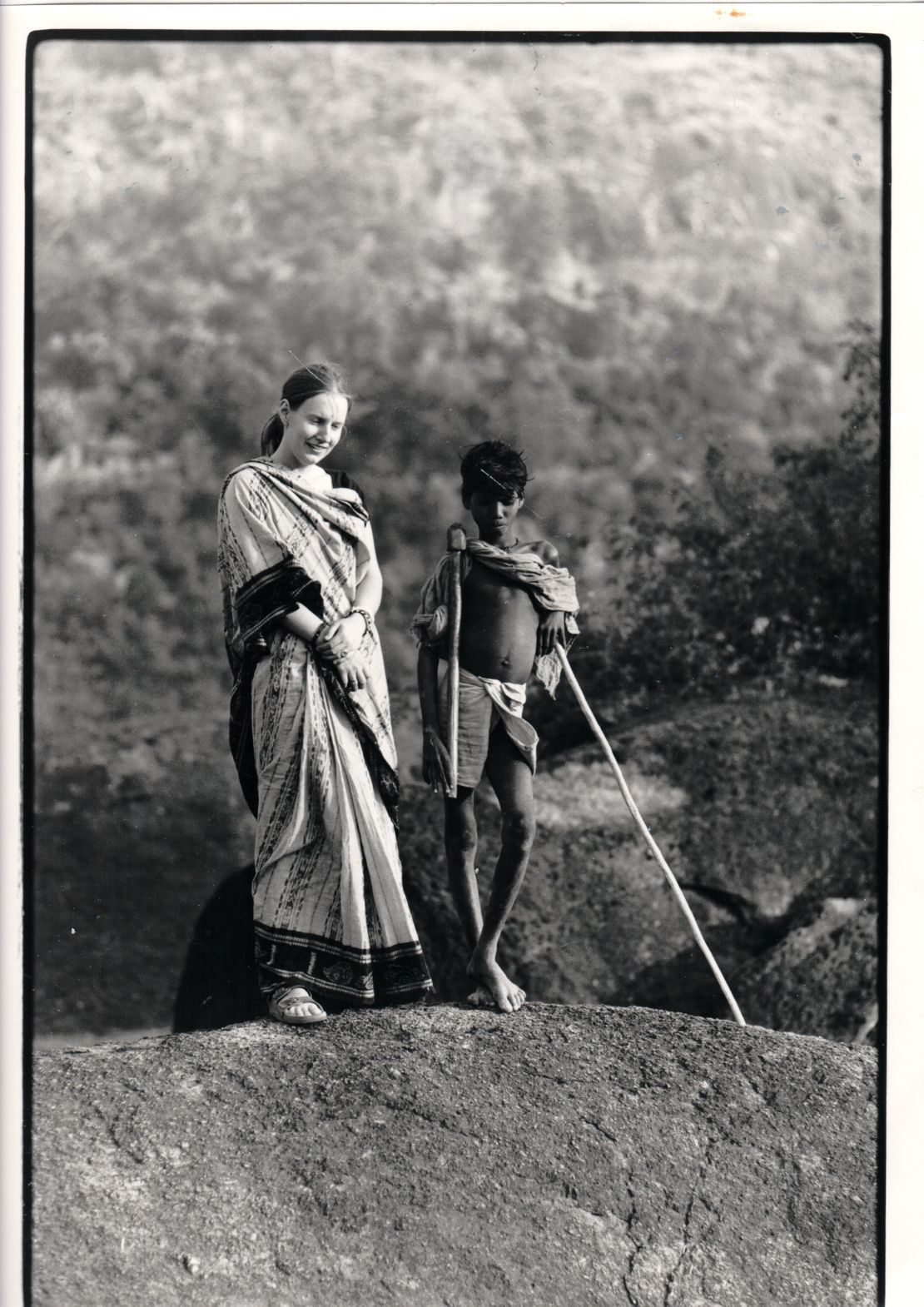
As a young woman, she was gripped by Indian culture – films like “Siddhartha,” the music of Ravi Shankar and George Harrison. “I was fascinated by East meeting West,” she remembers.
Luckily for both, Mahanandia’s portrait of Von Schedvin in the square that day wasn’t his best.
“It was a little bit shaky!” she said. “We said we’d come back the next day.”
When she returned, a realization dawned on Mahanandia. Could Von Schedvin be the western woman in his horoscope?
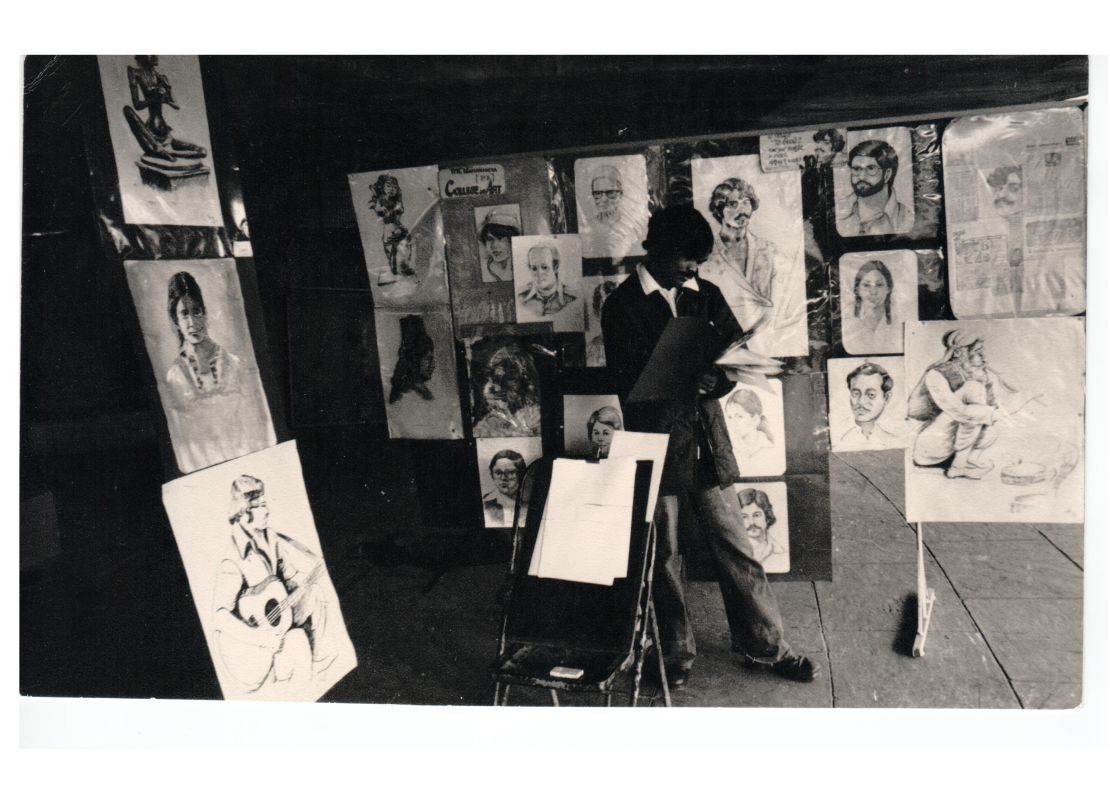
For the first time, that night Mahanandia says he prayed to the elephant god Ganesh. He wanted Von Schedvin to come back so he could ask if she was a Taurus.
“When I saw her at the traffic lights, I got nervous in the stomach. I put on my easel, ‘artist is sick’,” he said.
Then came the questions.
She was a Taurus.
She played the piano.
She owned forests – indeed, Von Schedvin’s ancestors had been given a portion of Swedish woodland after helping the King in the 1700s.
“I became shaky,” said Mahanandia. “I said: ‘It’s decided in the heavens, we are destined to meet each other.’ She was shocked!”
Follow your heart 100%
Trusting her instinct, Von Schedvin followed Mahanandia to meet his father in Odisha, where the couple received tribal blessings.
“I didn’t think, I just followed my heart 100%. There was no logic,” she said.
“When I was with her, I felt taller than the sky,” said Mahanandia. “I was no longer an outcast. It changed my attitude to myself inside.”
After just one month together, Von Schedvin returned to Sweden. Mahanandia, who had a year left of art school, remained in India.
But the time apart only strengthened Mahanandia’s resolve to see his love again, and in January 1977 he wrote to Von Schedvin telling her of his plan to cycle to Sweden and make her his wife.
Hippie Trail
Popular from the mid-1960s to late-1970s, the “Hippie Trail” stretched from India through Pakistan, Afghanistan, Iran, Turkey and former Yugoslavia to Europe. At that time travelers didn’t need a visa, and the region was safe and stable. Colorful tour buses departed regularly from London to Goa.
Setting off on two wheels, Mahanandia left Delhi with just $80. But he arrived in Sweden with more than $800 – painting portraits for food and money along the way.
Though some days he cycled up to 70km, the artist admits he got lifts wherever possible – even being gifted a train ticket from Istanbul to Vienna.
“Sometimes you’d get two or three hitchhiking offers and you’d have to choose!” said Mahanandia. “I bicycled for love, but I never loved biking.”
He arrived in Boras on 28 May 1977, over four months after his departure.
Though some friends thought the “holiday romance” wouldn’t last, the couple have been together in Sweden for 40 years. They have two children, Sid and Emelie.
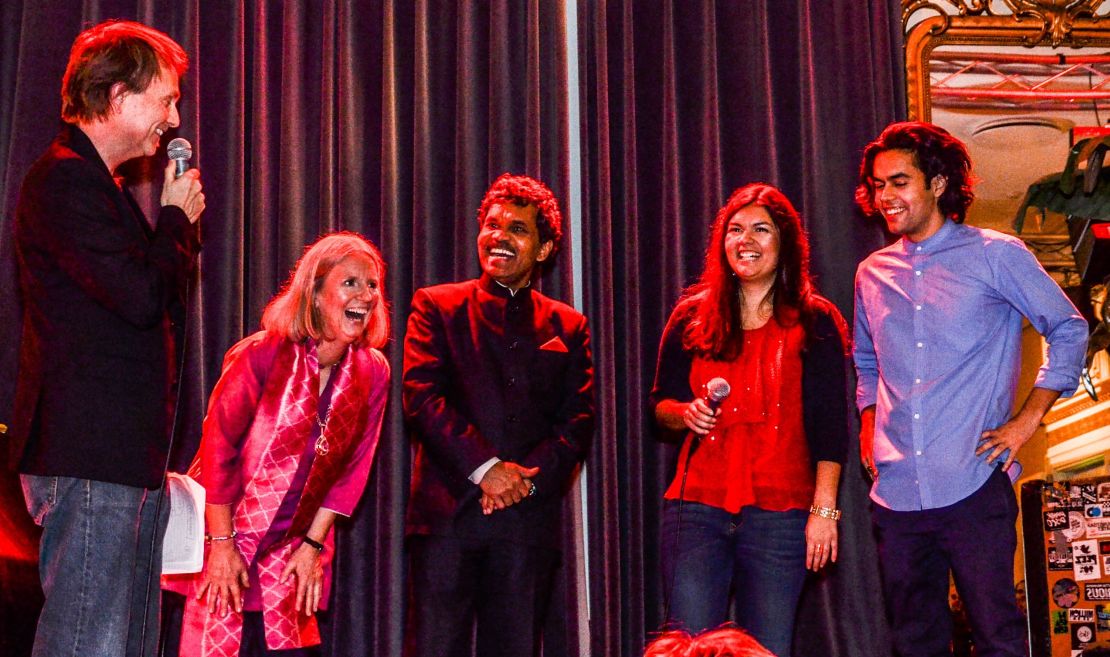
Alongside Von Schedvin’s music-teaching career and Mahanandia’s art, the pair have dedicated themselves to promoting indigenous arts and offering cultural scholarships to Indian Dalits.
Two years ago Mahanandia was awarded an honorary doctorate from his state university, and in 2005 nominated for the Nobel Peace Prize.
When floods prevented the artist from revisiting his village in 1997, the local government arranged a helicopter for him.
“I landed on my old school’s football field,” he said, smiling.
“Love has given me the power to forgive the people throwing stones at me. They need education. I’m glad that our story is giving people hope.”










